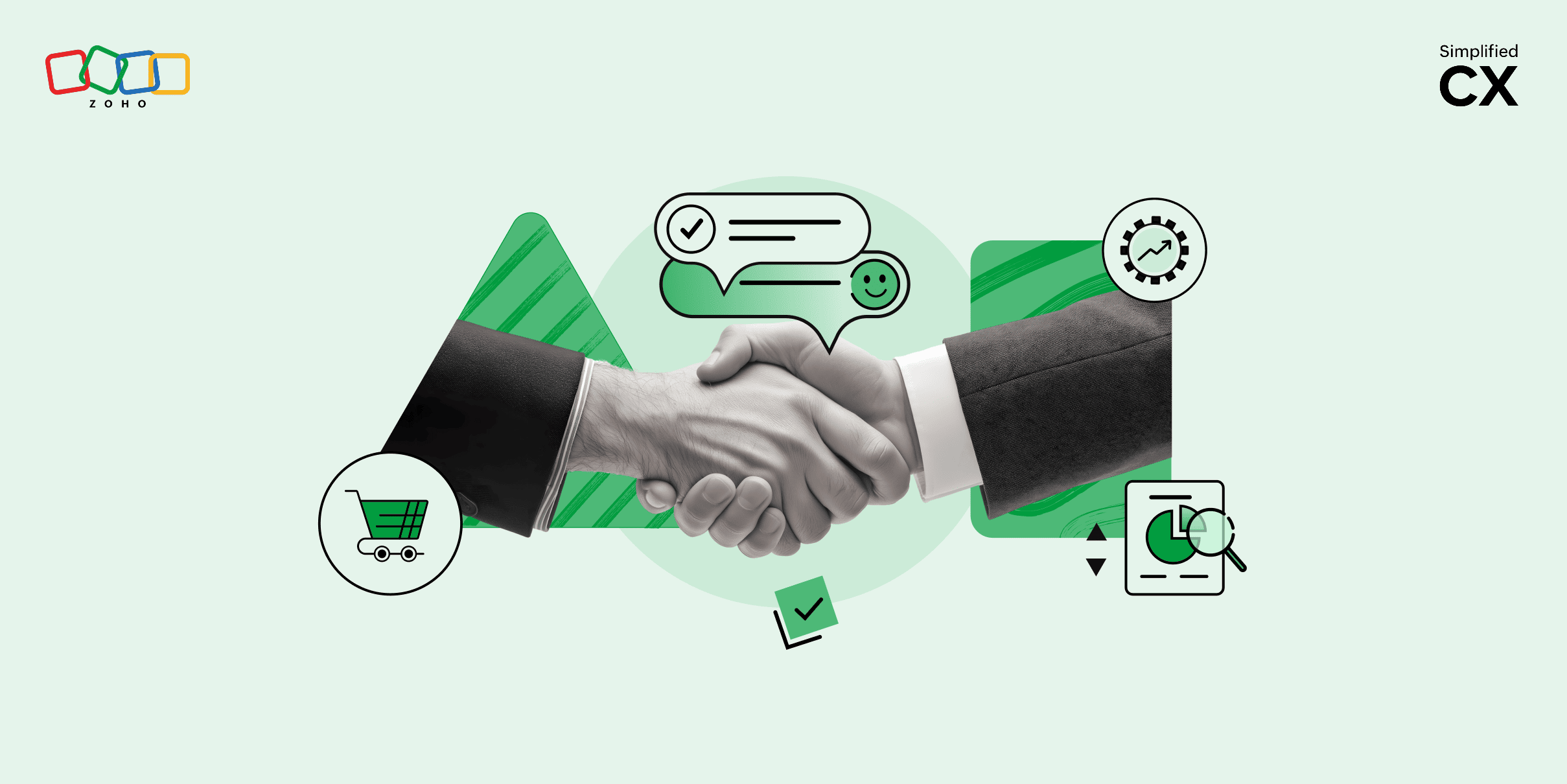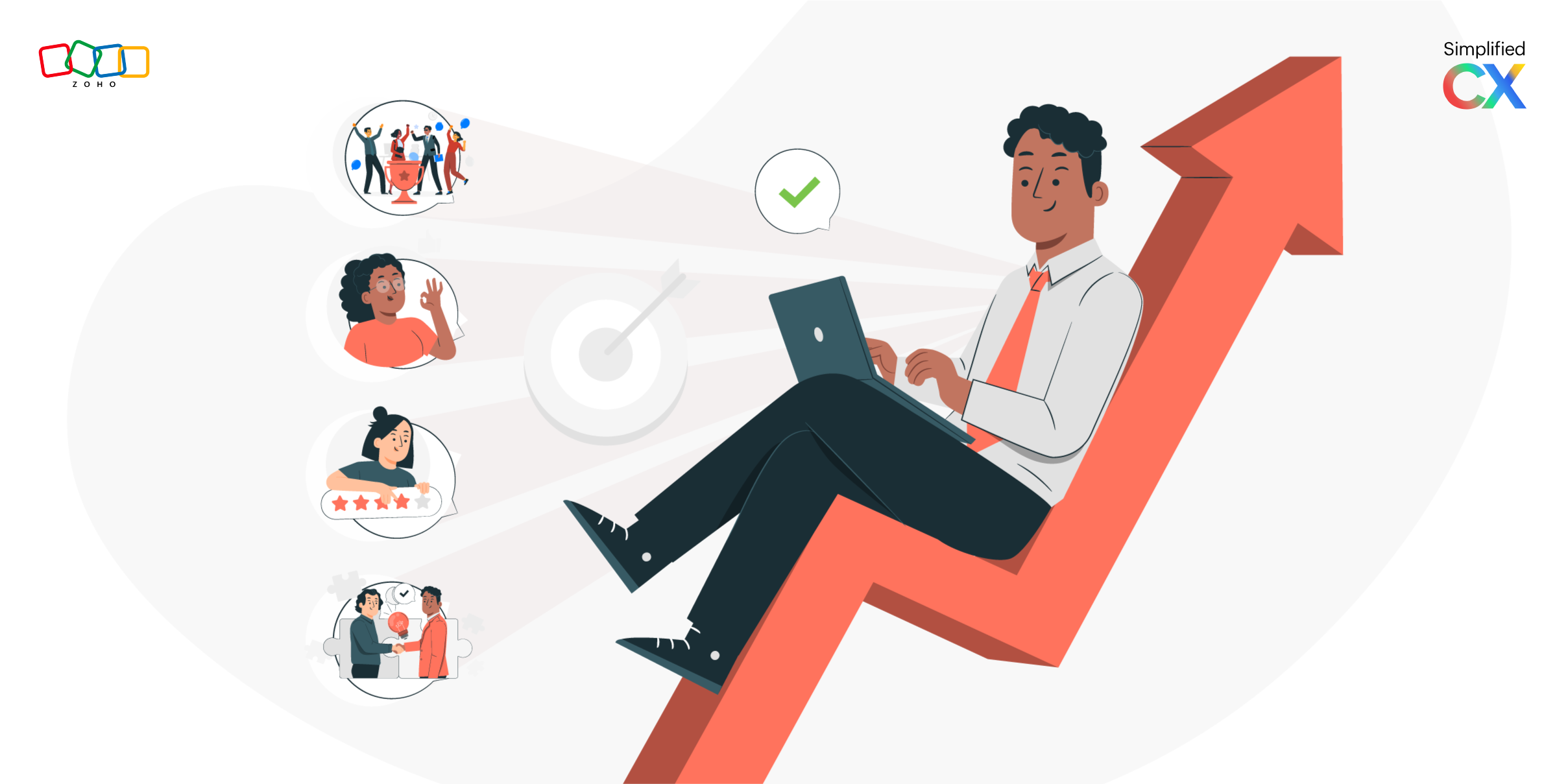To acquire new customers, listen to old customers
- Last Updated : October 24, 2023
- 324 Views
- 2 Min Read

Every business needs to increase its customer base to survive and grow—which is why customer acquisition is often the focus of marketing strategies. Unfortunately, acquisition efforts can make a dent in your marketing budgets without giving you any significant bump in earnings. That's because customer acquisition needs to be bolstered by customer retention before it can translate into sustained growth.
Take stock of the numbers
Marketing and sales teams are under constant pressure to deliver bigger and better numbers in terms of new leads, customers, and revenue. Often, their sole goal is to optimize and expedite the customer journey from inquiry to sales, sign-up, or subscription. This is where senior management and the C-suite need to step in. It's important to set long-term goals for your sales teams, drawing on relevant data from other departments like customer service, tech support, billing, and community building. Considering points of interaction in the customer journey, and paying keen attention to missteps, can provide the perspective necessary to build better CX and attract loyal customers.
Make sense of the numbers
Data doesn't show you everything. To add real value to the data, you need to see the numbers for the living, breathing people behind them. Only when you humanize the data will you understand the truth about customer needs and expectations.
How can you be sure you understand what people want from their experience with your company? How can your business build rapport with potential customers?
Look to your customers
Past and current customers provide an essential opportunity to learn. Your customers are diverse personalities, and getting to know them helps you craft more accurate customer personas to drive your marketing and CX strategy for the future. To get the most valuable information from these customers, be sure to:
Find out as much as you can about your current customers' journey from when they first noticed your business to the moment of purchase and beyond.
Track your past and current customers' journeys assessing every interaction and exchange across every channel, until the time they drop out, renew, upgrade, or advocate purchases from your business.
Follow up with your past and current customers through carefully implemented personal feedback to understand and relate to the emotions and reasons that inspired their choices.
Optimize feedback
Every interaction your customer has with your business is feedback. Always be ready to listen and understand. Support is a great opportunity to do this, because the customer initiates the interaction with the intention of conveying honest feelings. No amount of brand-building and campaigns can build an emotional connection better than a well-managed support ticket—even if it does not end with an effective resolution. What really counts is how your customer feels before, during, and after the interaction. This is true for both B2B and B2C businesses.
Past and present customers can tell you how they felt at various points during their customer journey. Their emotions and reactions to your content and processes at each point of interaction with your business provides valuable insight. Correlate this with information gleaned from support and you will know what it takes to tailor content that delivers value and provides impetus. Earning customer loyalty and brand equity is a bonus.


